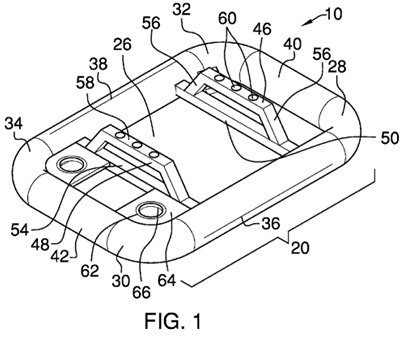The US Court of Appeals for the Federal Circuit affirmed a district court’s holding that the asserted method of treatment patent was valid and infringed because safety and efficacy are not patent concerns. The Federal Circuit also affirmed the district court’s holding that certain claims of the product-by-process patent were invalid because the claimed product was in the prior art, regardless of the process by which it was made. United Therapeutics Corporation v. Liquidia Technologies, Inc., Case Nos. 22-2217; 23-1021 (Fed. Cir. July 24, 2023) (Lourie, Dyk, Stoll, JJ.)
United Therapeutics is the maker of Tyvaso®, a treprostinil formulation approved for treating pulmonary hypertension. United Therapeutics asserted two patents covering Tyvaso® against Liquidia’s § 505(b)(2) new drug application (NDA) on Yutrepia™. One patent was a method of treatment patent claiming to treat pulmonary hypertension by administering a “therapeutically effective” dose of a treprostinil formulation, and the other was a product-by-process patent claiming a treprostinil composition with lowered levels of impurities made by a specific salt formation process.
The district court found that United Therapeutics showed that a single administration of treprostinil improves a patient’s hemodynamics, establishing that administration of Liquidia’s Yutrepia, comprising treprostinil, would directly infringe the method of treatment claims. The district court also concluded that even though Yutrepia’s label did not provide hemodynamic data, the label’s instructions would inevitably lead to the administration of a therapeutically effective single event dose. The court thus concluded that Liquidia would induce infringement of the method of treatment claims.
The district court further found that the asserted claims were not invalid for lack of enablement or written description. The court reasoned that a skilled artisan would not need to engage in undue experimentation to practice the full scope of the claimed treatment of pulmonary hypertension, despite potential safety concerns in treating certain patients, since the claims did not require safety and efficacy. The court found that the claims were not invalid for lack of written description, finding that a skilled artisan would, based on the specification, understand that treprostinil would effectively vasodilate the pulmonary vasculature, improve hemodynamics and treat a patient’s elevated pulmonary blood pressure.
Liquidia appealed on five issues: claim construction of the term “treating pulmonary hypertension,” enablement, written description, induced infringement and infringement of the product by process claims. United Therapeutics cross-appealed on anticipation of the product by process claims and non-infringement of those claims.
First, regarding the construction of “treating pulmonary hypertension,” the Federal Circuit affirmed that the term encompassed all recognized groups of pulmonary hypertension but noted that the claim language “treating pulmonary hypertension” did not import any additional efficacy limitations or safety limitations, even those in a group that would not benefit from the treatment. The Court declined to read any safety or efficacy requirements into the claims, explaining that absent incorporation into the claims, the safety and efficacy of a claimed treatment are the purview of the US Food & Drug Administration (FDA), not patent law.
Regarding enablement and written description, Liquidia argued that the method [...]
Continue Reading
read more

 Subscribe
Subscribe



